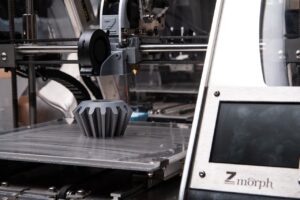In the rapidly evolving world of technology, 3D scanners have emerged as game-changers across various industries. From manufacturing and healthcare to entertainment and archaeology, these devices capture precise digital models of real-world objects, revolutionizing workflows and enhancing accuracy. But with so many types of 3D scanners available, choosing the right one can be daunting.
Understanding the different types of 3D scanners is crucial for making an informed decision. Whether you’re looking for laser scanners, structured light scanners, or photogrammetry solutions, each type offers unique advantages tailored to specific applications. This article delves into the primary 3D scanner types, helping you navigate the options and select the best tool for your needs.
3d Scanner Types

3D scanners capture the geometry of physical objects, converting them into digital representations. These devices employ various methods to achieve this, each suited to specific applications and environments. Below are the main types of 3D scanners and their primary characteristics.
Laser scanners use laser beams to measure the distance between the scanner and the object. They offer high accuracy and resolution, making them ideal for applications requiring precise measurements, such as industrial quality control and reverse engineering.
Structured Light Scanners
Structured light scanners project a pattern of light onto an object and measure the deformation of the pattern to capture the object’s shape. These scanners are fast and accurate, making them suitable for applications in healthcare and forensics. For instance, dental practices use structured light scanners to create digital impressions of patients’ teeth.
Structured Light 3D Scanners

Structured light 3D scanners utilize a unique method to capture the geometry of objects. These devices project a series of light patterns onto the object and capture the deformation of these patterns to create a digital model.
Structured light 3D scanners operate by projecting structured light patterns, such as grids or stripes, onto an object’s surface. Multiple images are then captured by cameras as the light patterns deform. Software algorithms analyze the captured images, identifying distortions, to construct a 3D digital model. This method allows for a high level of detail and precision.
Advantages
- Speed: Structured light scanners are faster than many other types, capable of capturing complex geometries in seconds due to simultaneous projection and capture of patterns.
- Accuracy: These scanners offer high accuracy, making them suitable for detailed applications like dental impressions and facial scans in healthcare.
- Non-contact: Because they do not touch the object, they are ideal for delicate or fragile items in fields like forensics and archaeology.
- Sensitivity to Light Conditions: Structured light scanners can struggle in uncontrolled lighting environments as ambient light can interfere with the structured light patterns.
- Surface Limitations: Highly reflective or transparent surfaces can cause inaccuracies because the projected light patterns may not be easily detected by the cameras.
- Cost: High-precision structured light scanners can be relatively expensive, potentially limiting accessibility for smaller businesses or individual users.
Structured light 3D scanners offer a powerful solution for detailed and rapid 3D scanning, particularly beneficial in industries requiring high precision. Their limitations, however, involve environmental and surface constraints, which should be considered based on application needs.
Laser Scanning 3D Scanners

Laser scanning 3D scanners are widely used for their precision and accuracy. These devices use laser beams to measure distances and capture detailed 3D data of objects. Laser scanning 3D scanners employ laser beams to determine the distance from the scanner to the object’s surface.
The device emits a laser beam, which reflects back after hitting the object. The scanner calculates the distance by measuring the time taken for the laser to return, known as time-of-flight. Point-cloud data is generated by repeating this process across the object’s surface, creating an accurate digital representation.
Advantages
Laser scanning 3D scanners offer several advantages:
- High Precision: Provides sub-millimeter accuracy, ideal for industrial applications.
- Versatility: Suitable for various materials and surfaces, from metal to organic.
- Speed: Captures large areas quickly, making it efficient for large-scale projects.
- Detail: Capable of capturing intricate details, essential for quality control.

